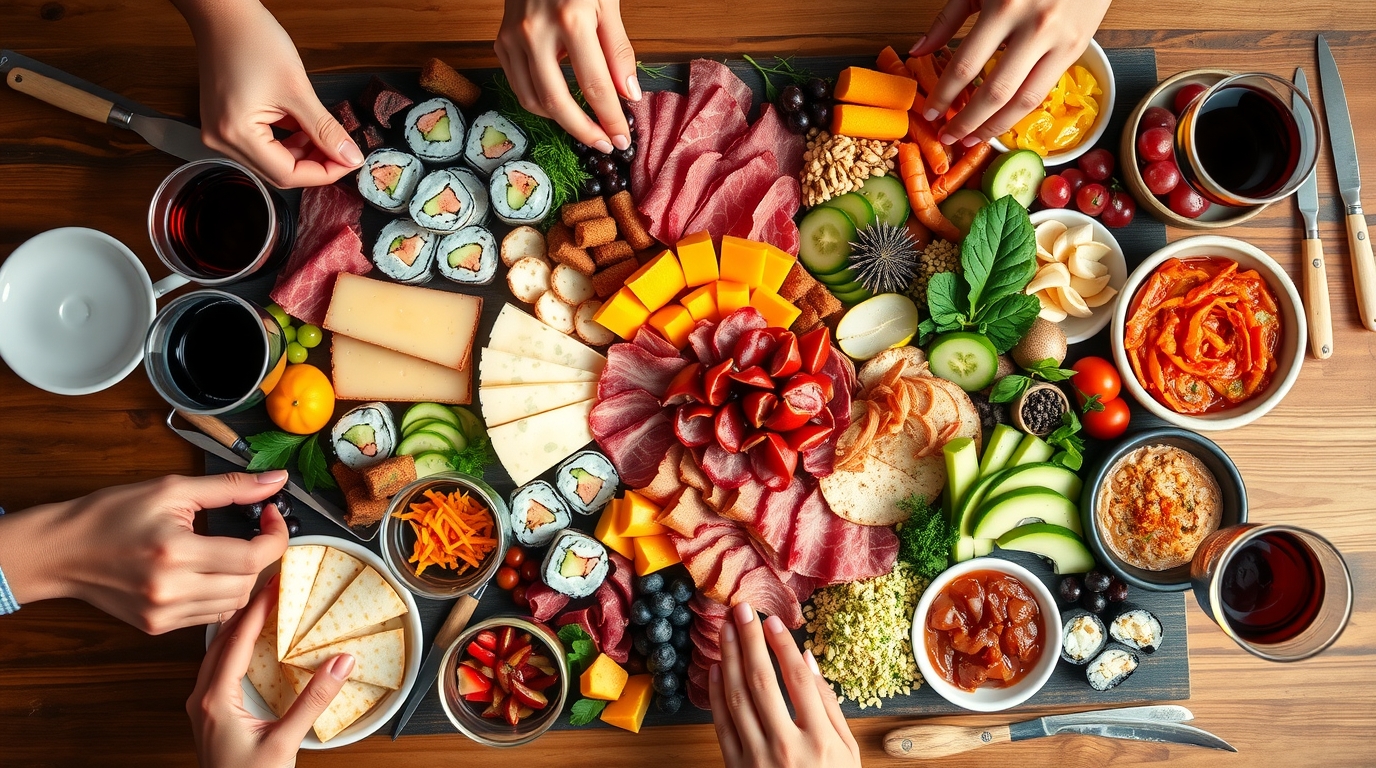The charcuterie board used to be simple. A few slices of cured meat, a wedge of cheese, some crackers, and maybe a handful of grapes if you wanted to impress. That version feels almost quaint now. In kitchens from New York to Tokyo, the board has become a canvas for global flavors. What started as a European tradition has turned into a worldwide showcase of creativity, culture, and plenty of social media fuel.
Fusion is at the heart of the movement. A single board might pair Spanish manchego with Korean kimchi, Italian prosciutto with Japanese wasabi peas, or Middle Eastern labneh with Mexican chili-lime corn chips. The combinations sound bold, sometimes even odd, but the result is an experience that feels modern and exciting. Every bite tells a story of cultures meeting and blending on the same surface.
Part of the appeal is visual. Charcuterie boards are designed for sharing, and sharing in 2025 often means posting before eating. Vibrant colors, unexpected textures, and carefully arranged spreads turn a meal into an image. Influencers call them edible mosaics, and the description is fitting. A board stacked with sushi rolls, French brie, and tropical fruit is as much a statement piece as it is a snack.
Hosts love them for a different reason. A global board allows for endless customization. Guests with different tastes or dietary restrictions can all find something they enjoy. Vegan spreads filled with hummus, roasted vegetables, and plant-based cheeses sit alongside boards piled with seafood, cured meats, and exotic fruits. The concept adapts easily to every occasion, whether it is a casual picnic or a wedding reception.
Food culture itself has changed in recent years, and charcuterie boards mirror that shift. People travel more, sample flavors from everywhere, and bring those ideas home. The internet spreads recipes across continents in seconds. What used to require a trip abroad can now be recreated with ingredients from a local specialty store or even a supermarket. The board becomes a way of tasting the world without leaving your kitchen.
There is also a deeper story here about how dining has become less formal and more playful. Instead of sitting down for a rigid three course meal, people are gathering around boards that invite conversation and exploration. Guests pick, sample, and share. It is communal rather than individual. In a world where schedules are hectic and attention is divided, the board offers flexibility without sacrificing flavor or creativity.
Of course, critics say the trend is going too far. Some boards look more like art projects than food, piled high with items that do not necessarily belong together. The line between fusion and confusion is thin. But even critics admit the trend has staying power. It is versatile, Instagram friendly, and most importantly, delicious when done well.
The commercial side has exploded too. Restaurants now offer curated global boards as menu items. Caterers promote them as modern alternatives to buffets. Specialty stores sell kits complete with international cheeses, meats, dips, and instructions on how to style them. What once was a side dish has become a centerpiece.
Global fusion charcuterie boards are more than a fad. They reflect the way modern eaters see food: not limited by geography, not tied down to tradition, but open, experimental, and communal. Whether you are arranging one for a family gathering or photographing one for your followers, the message is clear. Food is no longer just about flavor. It is about connection, culture, and creativity laid out on a single board.
